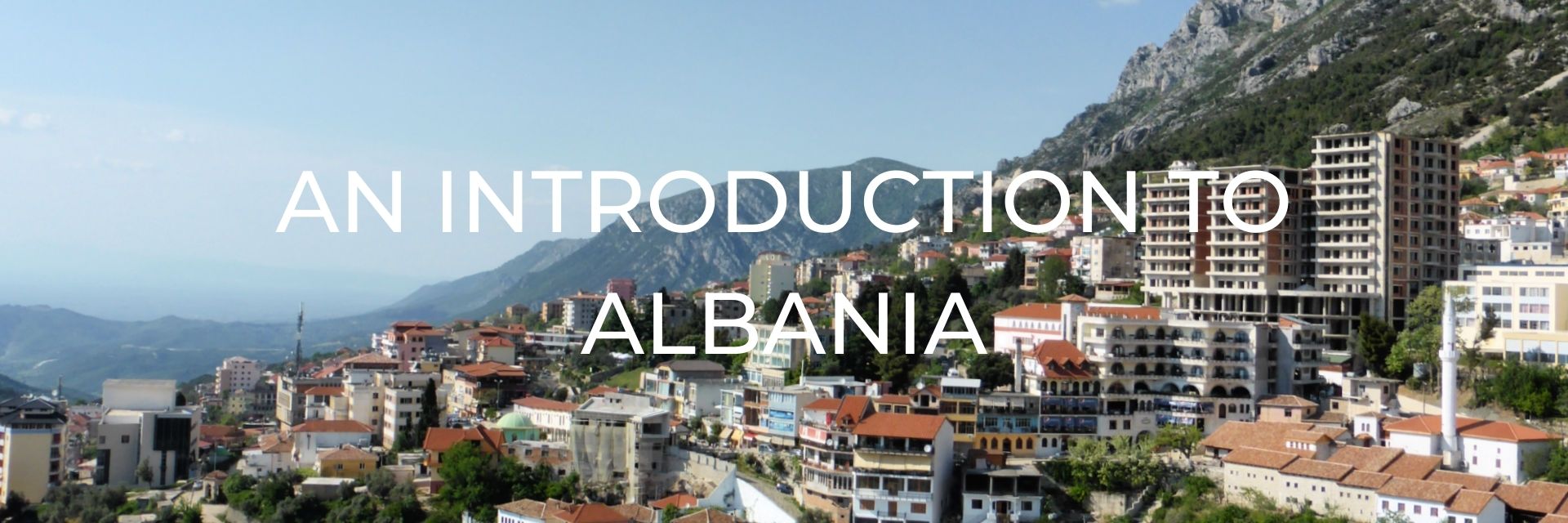
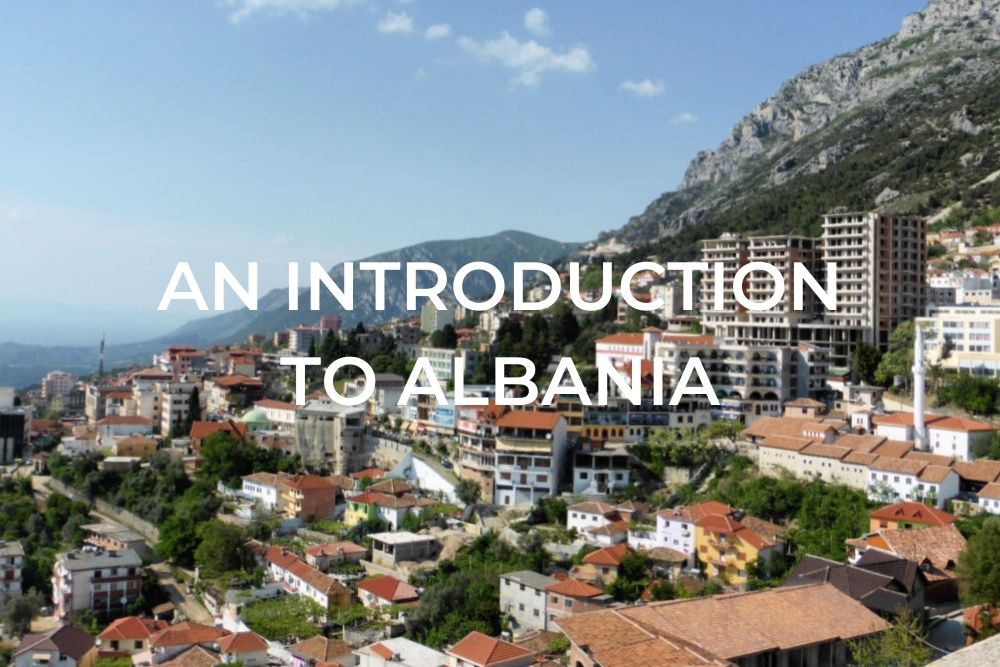
As I was starting to write up my notes about the first day of our trip I thought maybe I should take just one step back and give you a little introduction to the country of Albania. Unlike me, you probably haven’t read several books and blogs about it over the past few months, and it’s certainly not as well known as other countries like England, France, or Italy, so maybe a little introduction would be a good thing. A little taste of some of the things we learned about Albania that played a part in why we chose to visit, and why we enjoyed it so much while we were there.
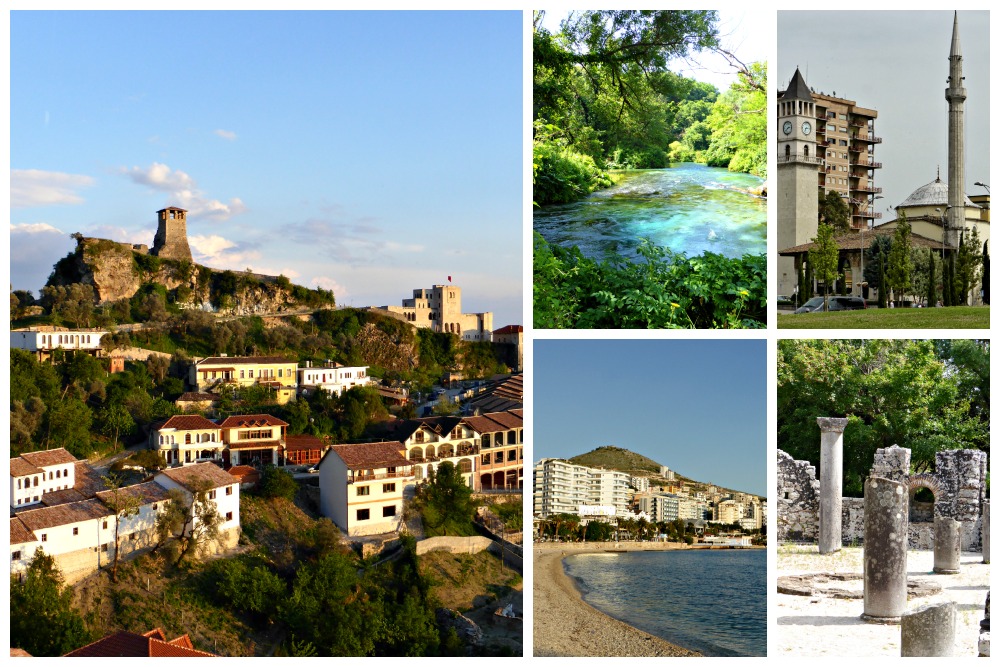
This post may contain affiliate links. Please read our full disclosure policy here.
Albania is a small, mountainous country in the Mediterranean that is bordered by Montenegro, Kosovo, Macedonia, and Greece. It is actually called Shqipëria, which means “land of the eagles” by its people, instead of Albania as most people know it. It has a very long and interesting history, beautiful landscapes, and is rich in culture.
For four decades Albania was under the rule of Communist leader Enver Hoxha and was characterized by isolation, poverty, and, most of all, paranoia. Thankfully since the early 1990s that has changed and it is now building itself back up and has opened its doors to visitors from all over the world. It is considered by many to be one of Europe’s last little hidden gems, but I don’t think that will last for too much longer. It is already much more developed and westernized than we were expecting it to be, though thankfully we didn’t see any McDonald’s or Starbucks. Although I have nothing against either of those companies personally, it is still nice to be able to visit a place that is different from so many other places.
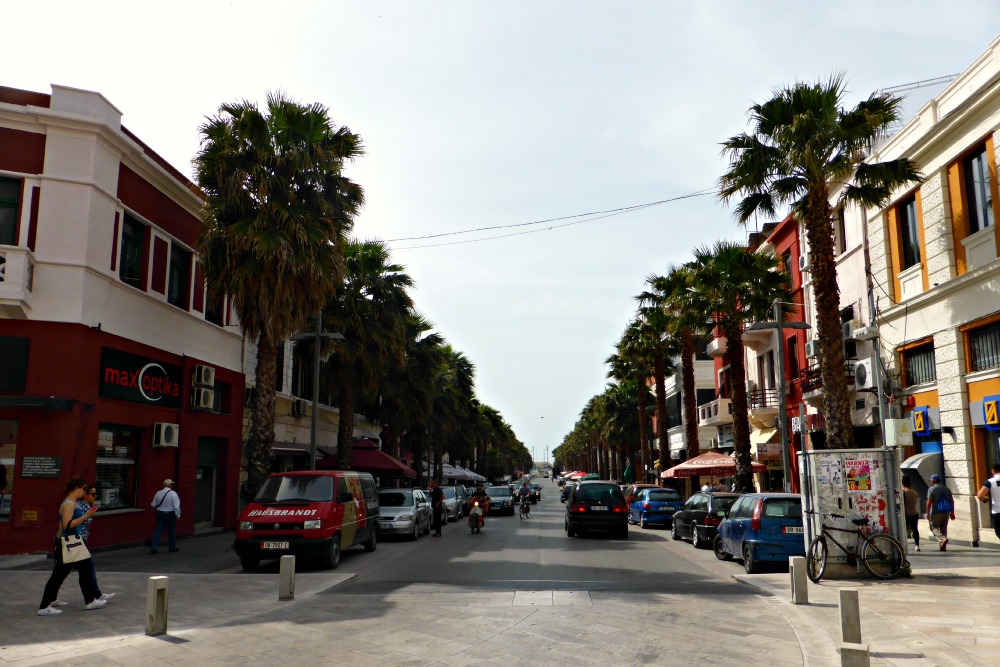
Strolling the streets of Durres
So you won’t find McDonald’s in Albania but what will you find? Well, hands down what I noticed most were the mountains. They are everywhere, and they are beautiful. If I have one photo with a mountain in it, I have 1000. And I love them all. Definitely, a change of scenery from the never-ending flatness of Texas where the highest hills you drive up are the overpasses on the freeways.
And then after that, you’ll find lots of water. Rivers, lakes, and, if like us you drive a lot on the coast, the Adriatic and Ionian Seas with their sandy or pebbled beaches and brilliant blue water. Put the mountains together with the seas and you can imagine the stunning landscapes.
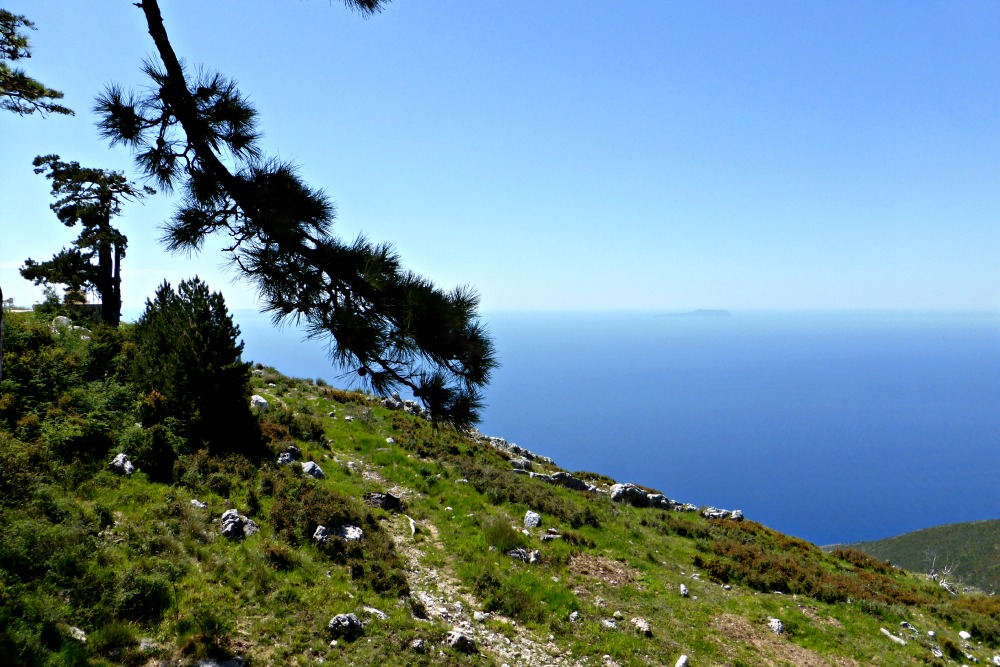
Llogara National Park along the Ionian Sea
Along with all this beautiful scenery, you can also visit historic Ottoman-era towns, like Berat and Gjirokastra, or modern cities like Tirana and Durres.
There are Byzantine churches alongside Muslim mosques. You’ll find some natural wonders, like the Blue Eye, which is a water spring that bubbles up from more than 50 meters below as the source of the Bistricë river.
For those interested in recent history you can see thousands of bunkers left as a remnant from the Communist regime.
Then, the icing on the cake, you can visit ancient Greek and Roman ruins and UNESCO World Heritage sites, which if you’ve read this blog for very long you’ll know was right up my alley as I work towards my goal to see 500 UNESCO sites in my lifetime.
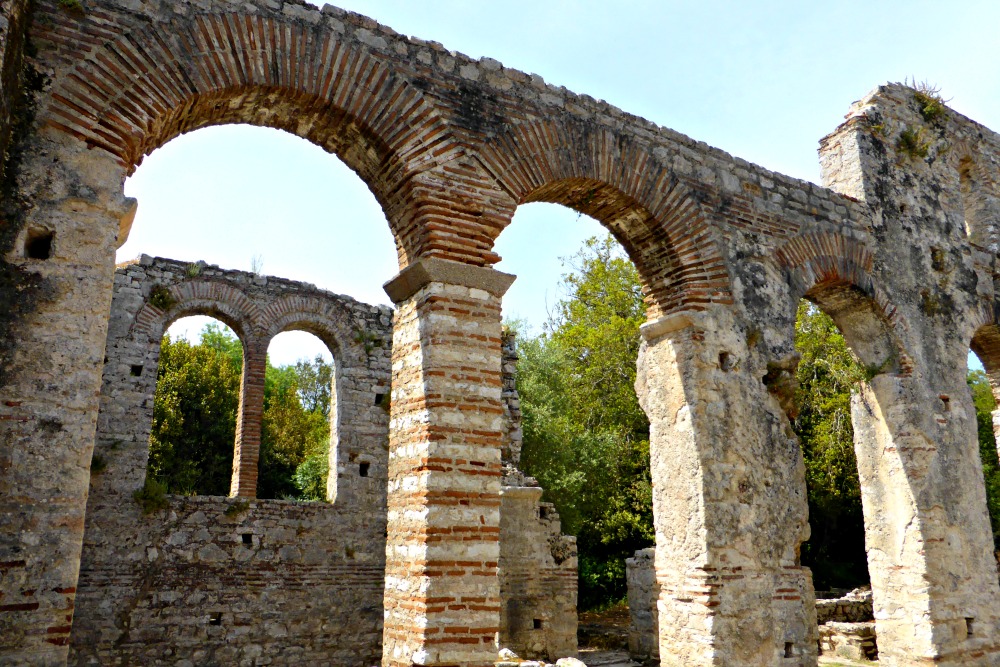
The remains of the Great Basilica at the UNESCO World Heritage site of Butrint
Although there is much beauty to be found in Albania, you do also need to be prepared that it isn’t a rich country and therefore there are also many places that are run down and worn out as they were neglected for decades. The infrastructure is still being developed and improved so the electricity can be unreliable in places and it may go on and off a few times during the day. This happened to us in Kruja and Saranda, although some hotels and homes do have generators to help compensate when this happens.
Also, the roads may not be what you’re used to, especially if you live in North America. Until 1990 nobody was allowed to own a car and there were just a few government vehicles so there wasn’t really any need for freeways and, as our guide told us, they purposely didn’t build long, broad, straight roads because they were afraid that enemies would land airplanes on them.
There is still much to be done but Albania isn’t nearly as behind as one might think, certainly not as much as we thought it would be. The country has come a long way since 1990 and when you think about it that really isn’t that long to build up a country that doesn’t have a lot of funds to do so.
Today you’ll find lots of areas under construction including many hotels (as they hope for more tourists), homes being built by the people themselves, parks being opened, and I even noticed in one area a man was painstakingly creating a pebble mosaic in a traffic circle to help beautify the city.
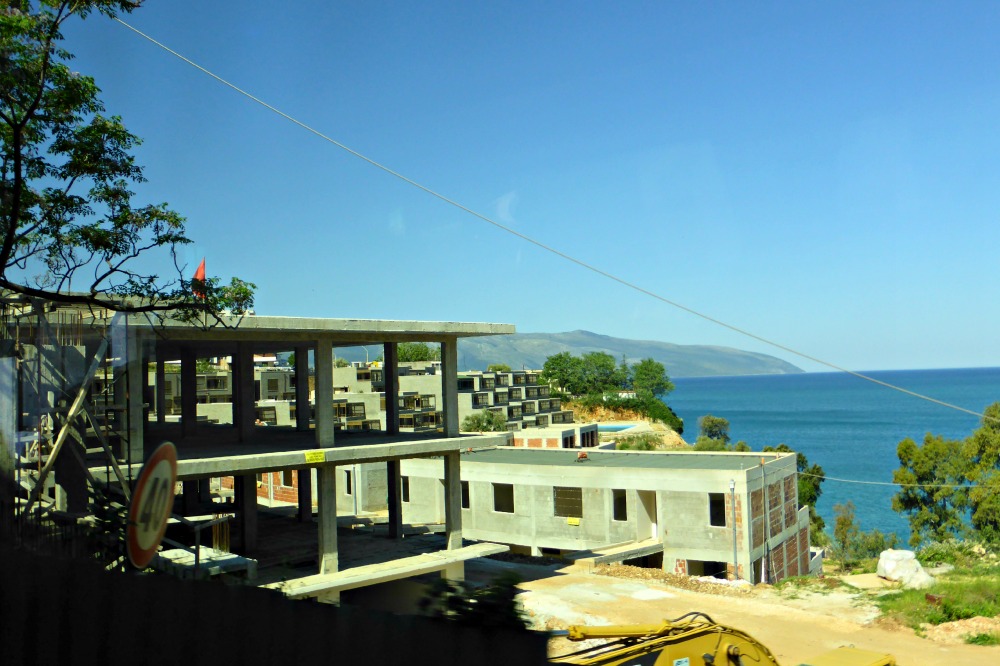
One of the many construction projects in progress as Albania continues to develop
I think the best way to experience Albania is to pack some patience (there will be delays), be a little flexible with your travel plans, go in with an open mind and the expectation that no, it will not be like “we do it at home” but that is part of what makes it so great and such a wonderful adventure.
I think a little research in advance will go far in helping to understand why things are the way they are, and you could also join a tour group like we did, which will likely help minimize some frustrations (I’ve heard public transportation can be unpredictable) and the guide will be a wealth of information that will enhance your trip like nothing else.
I’d also say leave any misconceptions you may have about drug traffickers and gangsters at home. We saw absolutely no evidence of either, and honestly, I have felt WAY more hassled as a tourist in Paris and Rome than I ever did in Albania. If the threat of the pickpockets in either Paris or Rome doesn’t keep you home, then you have nothing to worry about in Albania. Despite people from home telling me, it wasn’t safe, and “Haven’t you seen the movie Taken?” (no I haven’t), I didn’t feel any uneasiness in our surroundings. I can’t say the same for Paris.
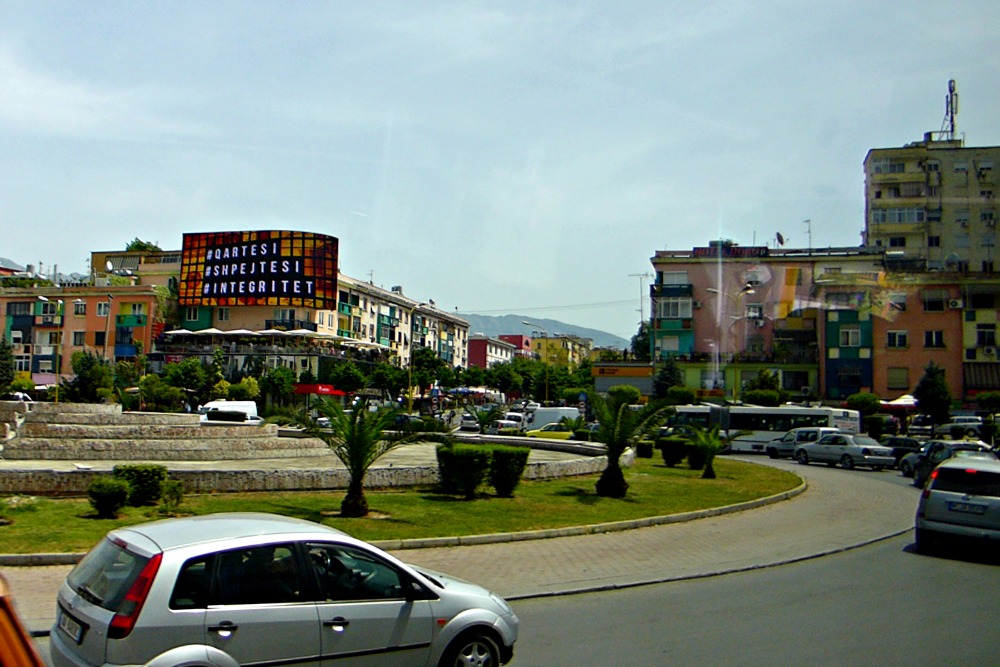
Bright, colourful, and oh-so-busy are the streets of Tirana, the capital of Albania
Overall the pros far outweigh the cons when you are visiting Albania and I believe it’ll only improve with time. Besides don’t those rough edges just make it a little more interesting? I thought they did. Kind of charming too really.
It’s also one of the least expensive countries you can visit in Europe so if you’re looking for that rich culture that comes with European countries, but is its own unique culture, Albania makes a very attractive choice. I told a few people how much our tour cost and the response was always the same, “What? That’s it?” Yep, that’s it. Your travel budget will go far in Albania. Of course with improvements will come more visitors which is why I think it is a great place to visit sooner than later.
Are you ready to hop on a plane to Albania yet? Oh please tell me you are. If so, here are a few things to help get you started planning your trip. And really, if you are please do tell me in the comments below. I’d love to hear about your travel plans. Or if you’ve already visited Albania and agree with me that everyone should give this little country a chance please also feel free to comment.
QUICK FACTS ABOUT ALBANIA
- Albania gained its independence in 1912, but it wasn’t until the early 1990’s that the Communist regime ended.
- The population is about 3 million with the three biggest cities being Tirana (the capital), Durrës (a major port), and Vlorë. We visited all three on this tour.
- It’s bordered by Montenegro, Kosova, Macedonia, Greece, and the Adriatic and Ionian Seas. Drive along the coast and you won’t be disappointed. It’s one stunning view after another and in some places, you can even see Corfu out across the sea.
- International flights are served by the Tirana International Airport Nënë Tereza (airport code TIA) which is much more modern than you may expect and is very easy to navigate, even coming in late in the evening after travelling for 16 hours and being completely exhausted.
- The currency is the Albanian Lek which was introduced in 1925. You can’t get any Lek outside the country so you’ll need to get it once you arrive but it’s very easy. There are an ATM and an exchange booth right by the luggage carousel and you can’t miss them. There are ATM’s in the big cities that are also not hard to find. I’d recommend always having some cash on hand because some of the smaller places don’t take credit or debit cards. Plus then you can bring home some of your leftover coins and bills as souvenirs.
RESOURCES | PLAN YOUR TRIP TO ALBANIA
Some of the links in the post above are affiliate links. This means if you click on the link and purchase the item, we will receive an affiliate commission but this does not affect the price to you. Please read our full disclosure policy here.
